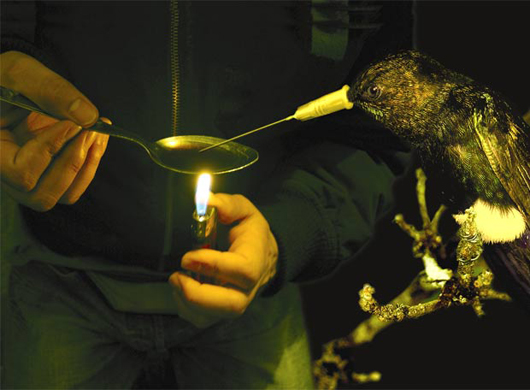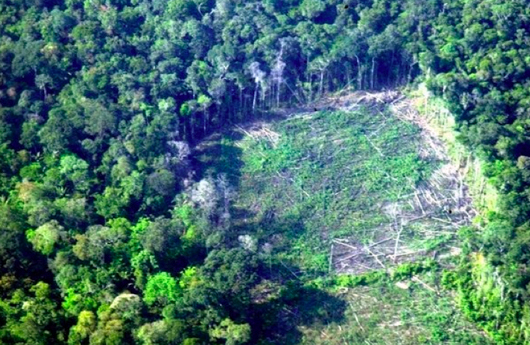Colombia: From white to green
04.05.10
Plant Talk introduced the Colombian cocaine issue a few weeks ago. Today Colombian's Oscar Cuervo and Nelson Reyes describe how the cocaine industry is ravaging the environment and people in their beloved home country.
The Colombian government has launched a campaign to raise awareness among cocaine consumers of the effects that coca crops have on the environment and people. The campaign Shared Responsibility aims to inform people and potential users of the dangers the drugs pose for human health and biodiversity.
Colombia is a large country of almost 445,000 square miles and 45 million people. But it's the hugely diverse landscapes and wildlife that makes it so special. The country contains more than 35,000 plant species, an estimated 19% of the world’s bird biodiversity, 10% of fish and 6% of reptiles. Interestingly, Colombia has the second highest magnolia diversity, after China, and the Antioquia region alone contains 16 species (of which two have only recently been described). Because of this diversity and rarity, magnolias were selected as one of the pilot groups for implementation of the Colombian National Strategy for Plant Conservation.

The Gorgeted Puffleg is an endangered hummingbird native to a small region in
western Colombia and has become a figurehead of the Shared Responsibility campaign.
With ecosystems ranging from the Amazon jungle to the snow peaks, coasts on both the Atlantic and Pacific oceans, and a privileged position between North and South America. Colombia is one of the most biodiverse countries in the world and the sixth largest producer of freshwater. The famous Harvard biologist Edward O. Wilson once noted that Biodiversity is to Colombia, what Oil is to Saudi Arabia. This rich natural history includes a vast number of endemic species, many of which are directly threatened by cultivation of coca. New species are constantly being discovered: but some may become extinct before they have even been discovered.
It’s well known Colombia is the world's largest cultivator of the coca plant. Less well known is the massive scale of this cultivation. Currently there are 81,000 hectares under production, but in recent years cocaine production in Colombia has dropped by 28%, which may be due to the increased yields of new coca varieties. Unfortunately these illicit crops and the strategies to eradicate them have dramatic effects on the environment such as destruction of ecological niches, loss of unknown genetic potential, trashing of endemic vegetation, substantial increases in carbon dioxide emissions, changes in precipitation patterns and climate, among others.

The most obvious symptom of coca production is the very graphic destruction of the tropical rainforest by cutting and subsequent burning. However, there are more subtle impacts including the effect on sources and biodiversity. As a result, the environmental losses far exceed the actual areas of cultivation, and it is estimated that for every hectare of coca two to three hectares of forest have to be destroyed. Scientists estimate 2,100 hectares of forest are destroyed annually in Colombia in the production and eradication of illicit crops and according to estimates the cultivation, production and trafficking of coca in Colombia has caused the destruction of at least 2.4 million hectares of tropical forest over the past 20 years.
This deforestation in turn drives soil erosion and a host of other environmental woes.
